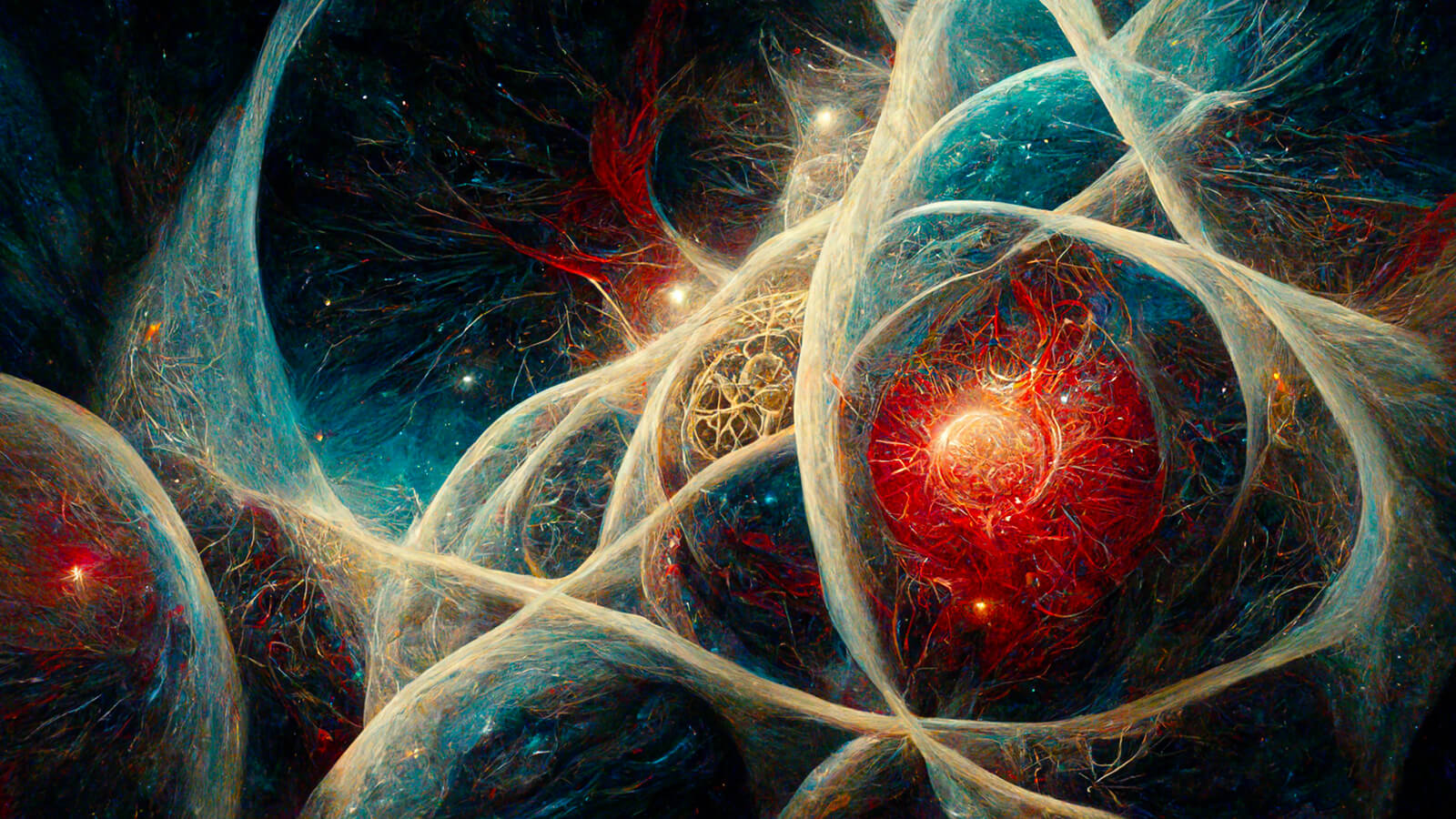This conversation sheds clarity on a very confused notion in the area of spirituality today—namely, the “tao of physics” and all its variations, as exemplified by the recent film What the Bleep. So what relationship, if any, does God actually have with quantum physics?
Does quantum physics prove God? This question has to do directly with the relation of modern quantum physics and spirituality. In effect, does modern physics prove God? Does the Tao find proof in quantum realities?
Ken Wilber’s answer: “Categorically not. I don’t know more confusion in the last thirty years than has come from quantum physics….”
Ken goes on to outline the three major confusions that have dominated the popular (mis)understanding of the relationship of physics and mysticism.
#1: Your consciousness does not create electrons. Unlike Newtonian physics, which can predict the location of large objects moving at slow speeds, quantum physics only offers a probability wave in which a given particle, like an electron, should show up. But here’s the funny thing: it is only at the moment that one makes the measurement that the electron actually does “show up.” Certain writers and theorists have thus suggested that human intentionality actually creates reality on a quantum level. The most popular version of this idea can be found in the movie What the Bleep Do We Know?!, in which we “qwaff” reality into existence.
Ken suggests this is both bad physics and bad mysticism. As for the former, in his book, Quantum Questions, Ken compiled the original writings of the 13 most important founders of modern quantum and relativistic physics, to explore their understanding of the relationship of physics and mysticism. Without exception, each one of them believed that modern physics does NOT prove spiritual realities in any fashion. And yet each of them was a mystic, not because of physics, but in spite of it. By pushing to the outer limits of their discipline, a feat which requires true genius, they found themselves face to face with those realities that physics categorically could not explain.
Likewise, none of those founders of modern physics believed that the act of consciousness was responsible for creating particles at the quantum level. David Bohm did not believe that, Schroedinger did not believe that, Heisenberg did not believe that. That belief requires the enormous self-infatuation and narcissism, or “boomeritis,” of the post-modern ego, and Ken goes into the possible psychology behind all of that.
#2: Quantum vacuum potentials are not unmanifest Spirit. The immediate problem with the notion that certain “unmanifest” or “vacuum” quantum realities give rise to the manifest world, and that the quantum vacuum is Spirit, is that it immediately presupposes a radically divided Spirit or Ultimate. There is Spirit “over here,” manifestation “over there,” and it’s only through these quantum vacuum potentials that Spirit actualizes manifestation—with Spirit set apart from manifestation.
“In terms of actual real physics or actual real mysticism, they were incorrect on both counts. And the marriage of bad physics and sloppy mysticism has been a nightmare….”As the great contemplative traditions agree, true nondual Spirit is the suchness, emptiness, or isness of all manifestation, and as such leaves everything exactly where it finds it. Nondual Spirit is no more set apart from manifestation than the wetness of the ocean is set apart from waves. Wetness is the suchness or isness of all waves. By identifying Spirit with quantum potential, you are actually qualifying the Unqualifiable, giving it characteristics—”and right there,” Ken says, “things start to go horribly wrong, and they never recover. These folks are trying to give characteristics to Emptiness. They therefore make it dualistic. And then things get worse from there….”
#3: Just because you understand quantum mechanics doesn’t mean you’re enlightened. Physics is an explicitly 3rd-person approach to reality, whereas meditative, contemplative, or mystical disciplines are explicitly 1st-person approaches to reality. Neither perspective is more real than the other, but each perspective does disclose different truths, and you cannot use the truth disclosed in one domain to “colonize” another. The study of physics, as a 3rd-person discipline, will not get you enlightenment; and meditation, as a 1st-person discipline, will not disclose the location of an asteroid (or an electron). The “content” of enlightenment is the realization of that which is timeless, formless, and eternally unchanging. The content of physics is the understanding of the movement of form within time, i.e. that which is constantly changing. And if you hook Buddha’s enlightenment to a theory of physics that gets disproved tomorrow, does that mean Buddha loses his enlightenment?
Ken goes on to suggest that what might be influencing quantum realities is not Suchness per se, but bio-energy or prana, which may be the source of the crackling, buzzing, electric creativity that so many theorists have tried to explain at the quantum level. Of course, it remains to be seen exactly what further research does and does not support.
About Ken Wilber
Ken Wilber is a preeminent scholar of the Integral stage of human development. He is an internationally acknowledged leader, founder of Integral Institute, and co-founder of Integral Life. Ken is the originator of arguably the first truly comprehensive or integrative world philosophy, aptly named “Integral Theory”.
About Corey deVos
Corey W. deVos is editor and producer of Integral Life. He has worked for Integral Institute/Integal Life since Spring of 2003, and has been a student of integral theory and practice since 1996. Corey is also a professional woodworker, and many of his artworks can be found in his VisionLogix art gallery.

